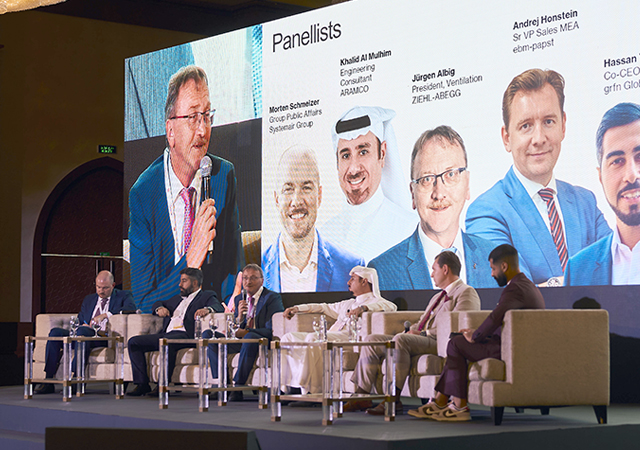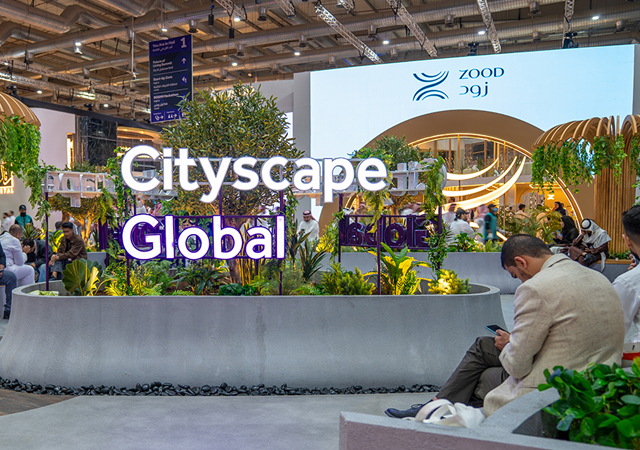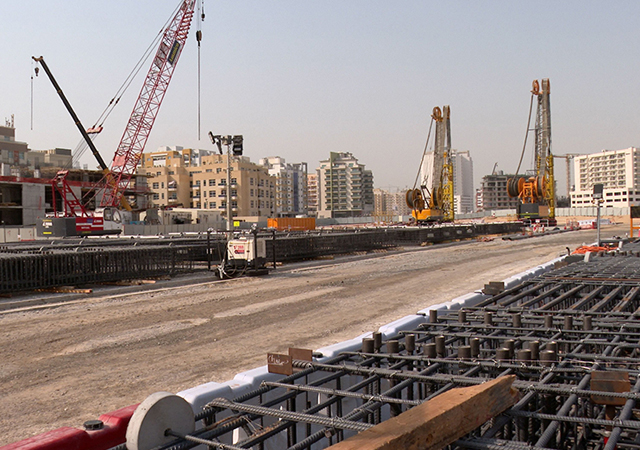
Saudi Arabia is believed to have projects in excess of SR2.0 trillion ($500 billion) currently under way, and although the kingdom may be selective in announcing further projects this year, project spending is expected to pick pace post 2010.
Saudi Arabia being one of the largest construction markets in the Middle East is estimated to have total real estate investments of around $300 billion, which is expected to cross the $400-billion mark by 2010. With one of the highest population growth rates in the region, coupled with an increasing flow of local and foreign workforce, the kingdom faces a growing need to offer a larger range of real estate facilities.
The country’s real estate market continues to maintain its appeal even in times of global recession. The existence of enduring demand fundamentals rather than mere speculation activity, heavily favours the growth of Saudi real estate market.
Real estate plays an important role in the kingdom’s non-oil economy, contributing to 6.8 per cent of the GDP in 2004, which is expected to increase to 7.2 per cent this year.
During the first half of 2008, when the kingdom witnessed windfall oil revenues, property prices are estimated to have risen between 40 to 80 per cent in the capital city of Riyadh. The market scenario started changing in the latter half of 2008 and is expected to witness price consolidation at lower levels this year.
Other developments that support this trend include the recently-increased issuance of both public and private residential and commercial building permits, which indicates higher construction activity in both these segments of the real estate market. The decline in prices of cement by 20 per cent to 25 per cent and steel prices by 50 per cent to 60 per cent from record highs will reduce construction costs and hence make projects more affordable.
Link for graph (real estate contribution)
Residential
The residential segment will continue to remain under-supplied for the near future, with the kingdom witnessing an escalating demand from the young middle-income group. Thus, if Saudi Arabia is to meet this demand, it will need to build 1.5 million new homes by 2015 and it will be up to the financial institutions to provide the finance that makes this possible.
Housing demand is the highest in Makkah (population: 6.1 million) and Riyadh (5.9 million) accounting for 26.7 per cent and 24.7 per cent, respectively. The kingdom currently requires at around 250,000 housing units, with the highest demand expected from the middle-income group. In order to fulfil the growing demand, the government is expected to provide an area of around 300 million sq m for residential plots in urban areas.
The increasing demand at times of limited supply resulted in a surge in real estate prices over the past years. Now with various initiatives being undertaken to meet the demand, prices are expected to consolidate at lower levels. In addition, some investors may be willing to sell property at lower prices in order to fulfil their liquidity needs at times of a global slowdown. Therefore, it is widely believed that rental prices (especially residential) could witness a correction in the wake of expansion in residential construction by both the public and private sectors.
Commercial
With minimal exposure to the global financial conditions and a strong reserves build-up during the recent oil boom, the country presents an expanding economic outlook promoting growth in the commercial, retail and industrial segments. The current area dedicated to industrial facilities is more than 1.5 billion sq m and this is expected to grow by more than 50 per cent as industrial estates under the economic cities and other designated regions are developed over next five to 10 years.
Some 17 million sq m of industrial areas are expected to be developed in King Abdullah Economic City over the next three years, with a further 50 million sq m expected to be added in this city alone by 2015. Using Gross Fixed Capital Formation (GFCF) as a measure of infrastructure investments, Saudi Arabia showed an encouraging increase during 2005-07. The government’s continued investment focus on the prioritised areas of the economy – with real estate being on the list – indicates growth in the real estate sector even in times of global recession.
Construction of retail facilities is expected to continue to grow. An estimated gross leasable area of 2.4 million sq m is set to be boosted by another 4 million planned over the next five years. According to market sources, the $24-billion retail sector is projected to grow by around 30 per cent by 2012.
Office space, which stands at around 8 million sq m in the kingdom, is expected to grow by 20 to 30 per cent by 2012. Although Riyadh currently holds the largest quantum of office space, it does not have an adequate supply to fulfil the demands of all business classes. Hence, the city is keenly developing projects such as the King Abdullah Financial District, which is expected to be the largest financial centre in the Middle East (see separate article).
Hospitality
With a growing global Muslim population of 1.5 to 2 billion, the number of Muslims visiting the holy sites in Saudi Arabia will continue to increase. This rise in religious tourism will call for continued investments in this segment. According to official sources, the current hotel capacity is not sufficient to cater to the number of tourists visiting the kingdom. To meet the shortfall, the public and private sectors would have to work actively to bring in new supply of hotel rooms to the 125,000 existing ones. Saudi Arabia, with a tourism strategy estimated at around $40 billion, envisions the development of various tourism areas including religious and historic sites and seaside resorts. The government forecasts the total income from domestic tourism will reach $19.5 billion by 2010.
Saudi real estate law
In the absence of a comprehensive Saudi mortgage law, the authorities are making efforts to bring in more clarity and comprehensiveness into the Saudi real estate laws. As per the current practices, a variety of long-term leases and ownership options are being used in the housing market.
The kingdom’s foreign investment law passed in 2000 has enabled foreigners to have a 100-per-cent ownership in projects. Although there are restrictions and some approval requirements, a non-Saudi, non-GCC citizen who intends to buy real estate must be a legal resident of the kingdom and must purchase the property for his own use. The law also permits foreign investors to own real estate required for the project itself or for employee housing of the licensed projects. In order to prevent speculation, property cannot be resold within five years of purchase. The exception on foreign ownership prevails in Makkah and Madinah, where non-Muslims can only go for limited lease periods.
The government has indicated that a new mortgage law and mortgage financing regulations are being finalised and, once enacted, will allow a wider access to property ownership in the kingdom. These regulations will also help in establishing the overall regulatory framework for the mortgage financing in the country. It is expected that the new law is likely to include provisions for banks to establish a separate mortgage business that is not subject to the provisions of the banking control law.
The most-eagerly-anticipated element of the new legislation is the provision of guarantees to banks in case their clients default on repayment; an area that lacks clarity in the current system. Any regulation on repossession in the new law will provide a valuable impetus in the growth of the mortgage industry.
Link for graph (housing demand by region)
Key growth drivers
• Population and demographic story: Saudi Arabia’s population growth rate – the fastest amongst Arab countries – opens up the kingdom to a vast array of growth opportunities. The kingdom’s population has grown more than threefold in the last three decades, increasing from 7.3 million in 1975 to 24.7 million in 2008. With 60 per cent of the population between the working age of 15 to 64 years, a strong demand is indicated in all categories of households. The data also shows that the majority of population is concentrated in the regions of Makkah (25.2 per cent) and Riyadh (24.4 per cent).
• Foreign and domestic investors. During 2007, Saudi Arabia attracted FDI (foreign direct investment) inflows of $24.3 billion while UAE (one of the leading Gulf economies) received investment flows of $13.2 billion. The FDI inflow as a percentage of gross fixed capital formation also showed a consistent increase in the kingdom, recording a rise from 29.7 per cent in 2006 to 30.1 per cent in 2007.
• Availability of low-cost financing: On account of the global financial crisis, liquidity constraints cannot be ruled out in the kingdom. But the negative real interest rates and relatively strong domestic demand by the home-seekers and investors could still keep the real estate activity quite active in the kingdom.
Bank credit to the building and construction sector posted a five-year CAGR (2002-07) of 15.7 per cent, recording a value of SR43.4 billion in 2007. With the third-quarter 2008 credit to building and construction sector amounting to SR53.6 billion, the sector is expected to continue its double-digit growth in coming years.
An indication to the government’s continued focus on the housing sector is the signing of a memorandum of understanding between Public Investment Fund (PIF), the General Organisation for Social Investment (Gosi), the Public Pension Agency (PPA) and the World Bank’s International Finance Corporation (IFC) for $400-million to provide housing finance facility. Under the agreement, the financial institutions would provide long-term funding to banks and housing finance firms to help them provide affordable financing to lower and middle-income households.
Focus on infrastructure
The Saudi budget for 2009 indicates the kingdom’s continued commitment to giving priority to projects that ensure sustainable and balanced economic development and hence higher job creation. The total new capital expenditure of SR225 billion constituted 47.3 per cent of the total budgeted expenditure in 2009 and is 36.3 per cent higher than that for 2008.
It is also estimated that planned investments to be implemented under public-private partnerships, mostly in infrastructure (during 2007-12), could exceed $300 billion, thus, indicating increased infrastructure activity in the years to come.
Outlook
The first half of 2008 brought a windfall oil revenues for Saudi Arabia due to high oil prices. This in turn resulted in property prices rising by 40 to 80 per cent in Riyadh. Besides the strong domestic demand in the country, the heightened real estate activity was further catalysed by investors coming in from other Gulf states. However, prices began to fall by the year-end and are expected to consolidate at relatively lower levels in 2009.
The Saudi real estate market is expected to grow by more than five per cent per annum over the next two years. To meet the rising demand for real estate, it is estimated that around 200,000 units per year will be required over the next five years.
With less than 50 per cent of Saudi residents owning homes and 60 per cent of the population being under 30 years of age, apart from the fact that the kingdom has a significant expatriate labour force, demand for housing is expected to be substantial. The latest developments tend to provide all the basic amenities. Moreover, such facilities would be offered in the wide range of price bands in order to fulfil the demand across various strata of the society.
The kingdom’s real estate sector is to continue to grow at an average annual rate of five to seven per cent till 2012. In addition to high population growth rates, increased per-capita income and rising standards of living, attractive business and investment environment in the kingdom is boosting demand in both the residential and commercial segments. The undersupply scenario, a major challenge especially for the affordable low-income housing segment, is expected to continue for the short to medium-term until new supply is delivered.
Besides the development of various real estate projects across the kingdom, the introduction of innovative mortgage products following the mortgage laws will provide a valuable impetus to the fast growing sector – thus making real estate market a widely sought-after investment area for both domestic and foreign buyers.

















.jpg)













 (1).jpg)





























































.jpg)












